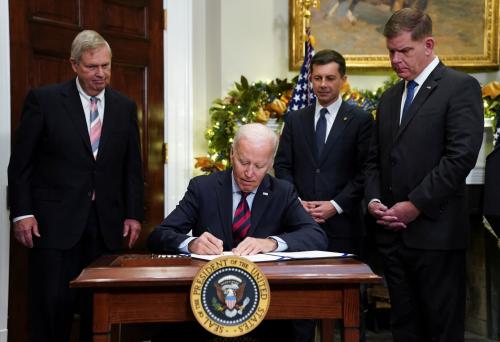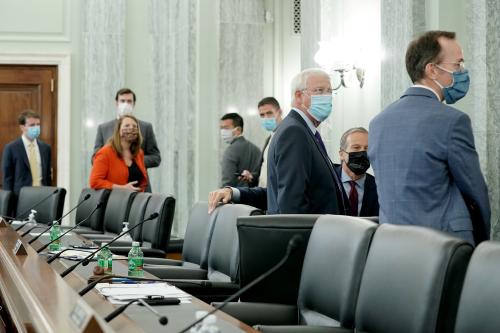In this highly polarized Congress, is there some space for bi-partisan reform of the regulatory state? Everyone seems to be in favor of “better, smarter” regulation. But what, exactly, is that? In a new paper out today called, “An Opportune Moment for Regulatory Reform,” Phil Wallach takes the reader through four major topics in regulatory reform and evaluates each of them in terms of their practical and their political feasibility. In doing so he gives reformers hope that there are sensible ideas out there that could, in fact, be enacted.
The first idea he examines is the regulatory budget, long a favorite of the libertarian right. But versions of this idea have also been heard from Democrats such as Senator Mark Warner who has talked about a “regulatory pay as you go” system. This would require the “executive branch and independent agencies to offset new compliance costs by cutting equivalent amounts of old ones.” Wallach walks us through the pros and cons of this idea, concluding that “…given the inherent difficulties of adapting the budgeting mindset to the regulatory environment, it would probably not be the most efficient or effective way of improving the nation’s regulation.”
He then moves on to what he sees as some more promising areas for reform. The first is refining and expanding cost-benefit analysis (CBA). There is an intense academic debate about the inherent biases in the system as now practiced leading Wallach to conclude: “For the moment, those who believe CBA systematically underestimates costs and those who believe CBA systematically underestimates benefits are likely to cancel each other out…” A more concrete and more likely reform proposal would be to extend cost-benefit analysis to independent agencies, something that has received positive reactions from both Republicans on the Hill and from the Obama White House.
The second area where Wallach thinks there could be some possibility of reform is in the creation of a new Congressional Regulatory Office. Such an office “would do well to follow the CBO’s model of nonpartisan, technical excellence, rather than merely assuring bipartisan membership and rotation of the two parties’ leadership.” Wallach makes a convincing case for why this is a much more realistic way to bring some degree of congressional oversight back into the regulatory process than the ideas outlined in the many of the proposals circulating on the Republican side.
But of all the ideas proposed Wallach thinks that the most promising involves the notion of “regulatory look-back.” The case, as Wallach presents it, is as follows: “After a regulation has been in place 5 or 10 years, both regulated interests and their regulators can assess a rule’s impacts much more concretely, relying on experience rather than modeled estimations. This ought to create an ideal moment for evidence- based, incremental improvements. And yet the process as it exists right now does very little to utilize that information beyond various ad hoc or statute- specific mechanisms.”
Finally, Wallach makes an argument that needs to be made. In many instances improving the regulatory system or “getting government off people’s backs” may require more regulators, not fewer. The key –as Wallach neatly puts it – is the building of government capacity. Over the years OIRA (the Office of Information and Regulatory Affairs) “has shrunk by a quarter in inflation-adjusted terms and its staff has been halved— while spending on federal regulatory activity has more than tripled. Without increasing its capacity, putting more demands on it is likely to result only in a backlog of work and delays.” Investing in government capacity is needed to improve the government’s regulatory apparatus.
Regulation is a favorite topic for politicians of both parties. If anyone truly wants to do something instead of railing against the system, Wallach offers a very sensible path forward.


Commentary
Better, Faster, Smarter Regulatory Reform – Here’s How
April 11, 2014